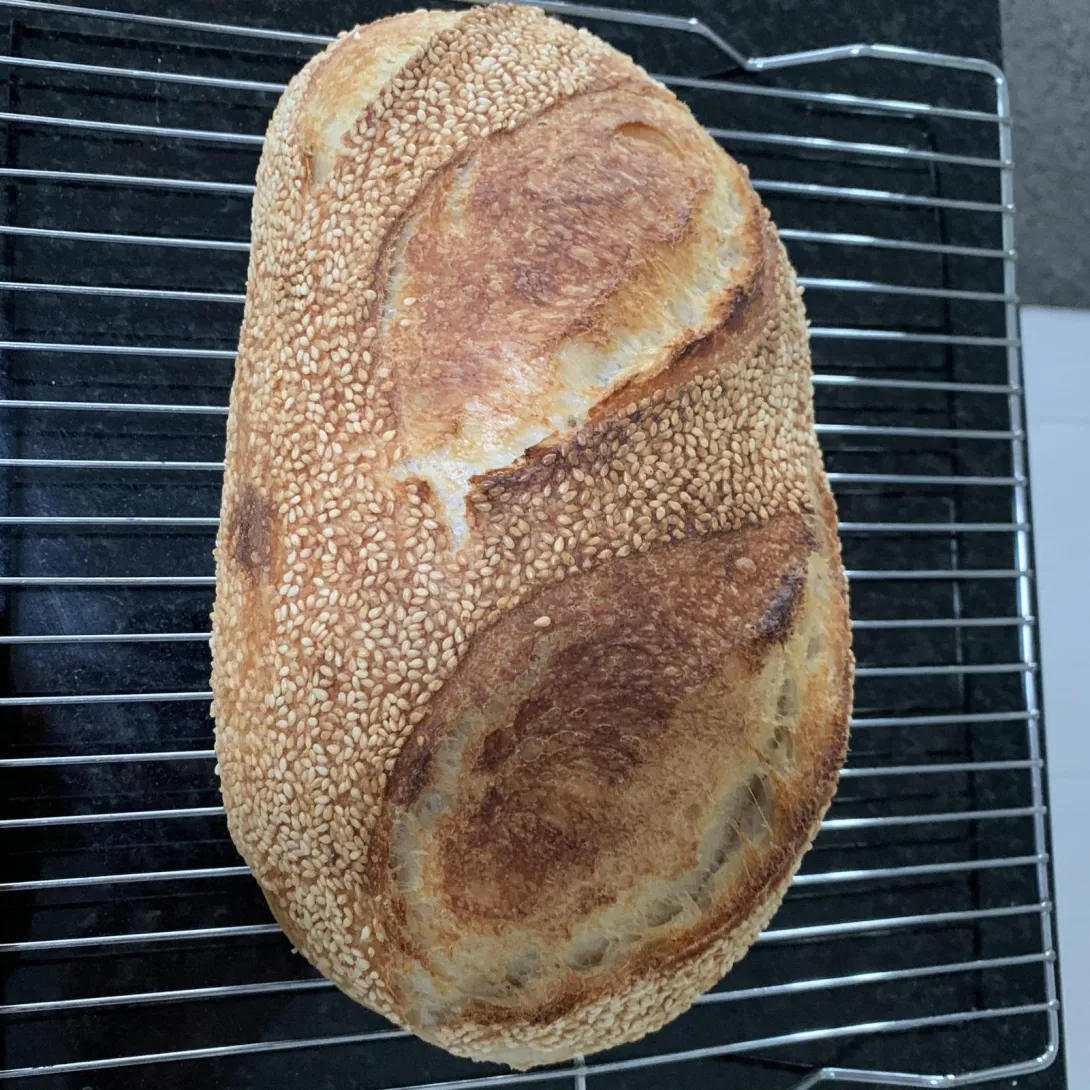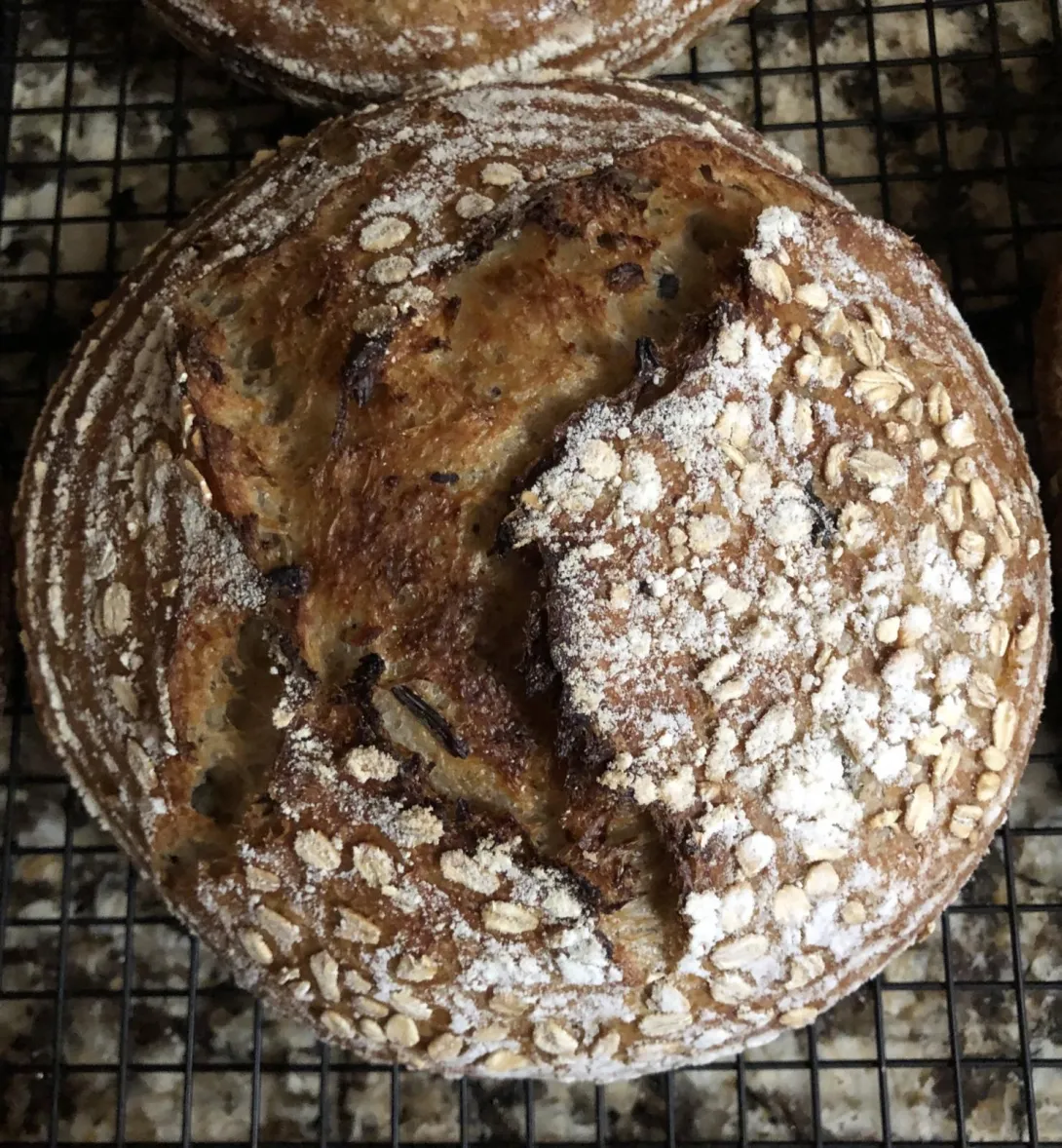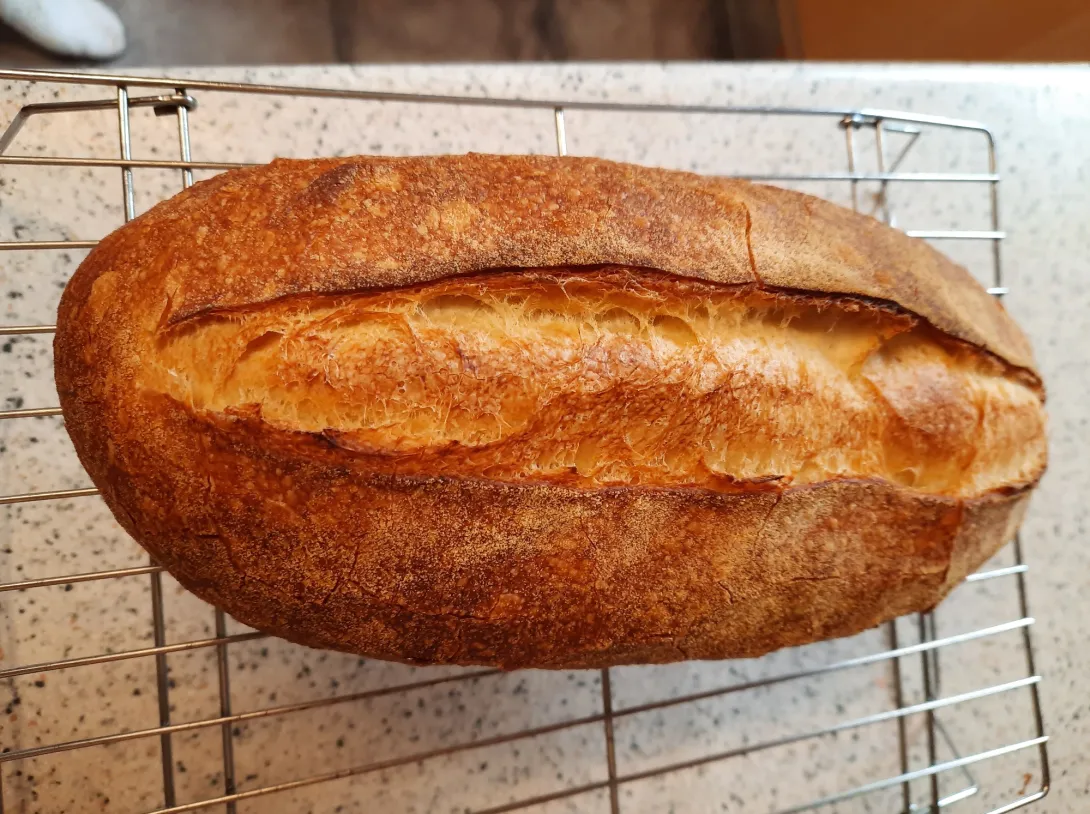Sesame Semolina Sourdough Baguettes Set No. 2
Back at the same sesame semolina sourdough baguettes but with some changes to try to improve the crumb. So I made some changes in the hopes of achieving a more open crumb. The first significant change I made was to delete the commercial yeast altogether, this change was made by accident and wasn’t planned as removing the commercial yeast wasn’t something that I thought would improve the crumb. In fact, I thought that the addition of commercial yeast was part of what was giving my an open crumb.
- Log in or register to post comments
- 4 comments
- View post
- Benito's Blog

 (Above image is pre-cooked, shortly after mixing.)
(Above image is pre-cooked, shortly after mixing.)


